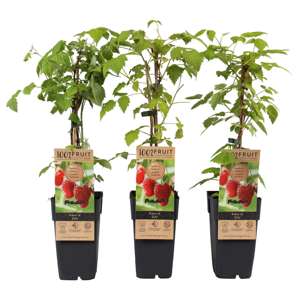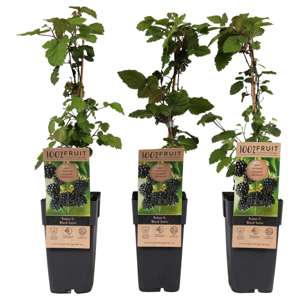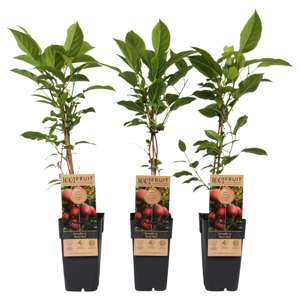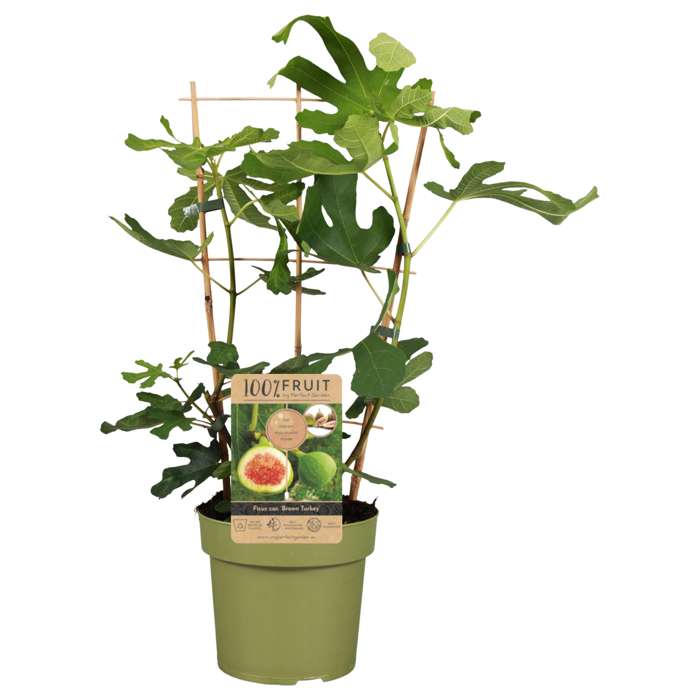
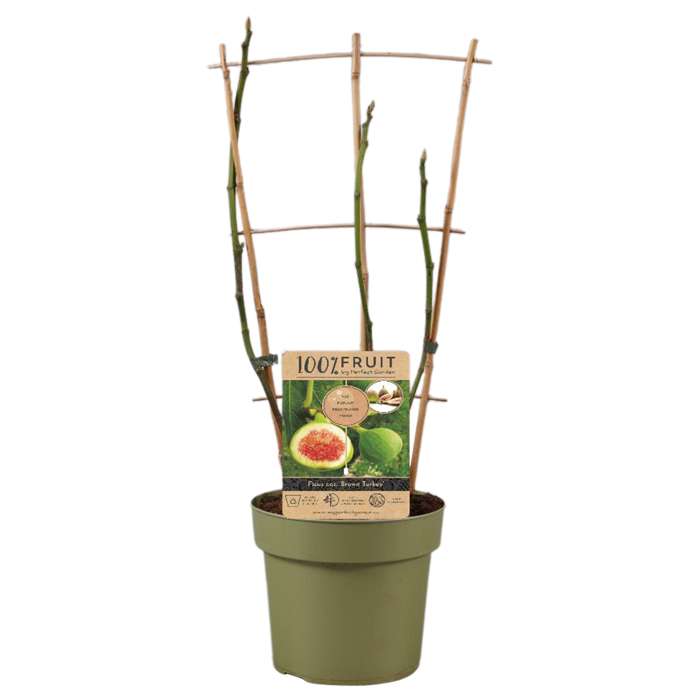

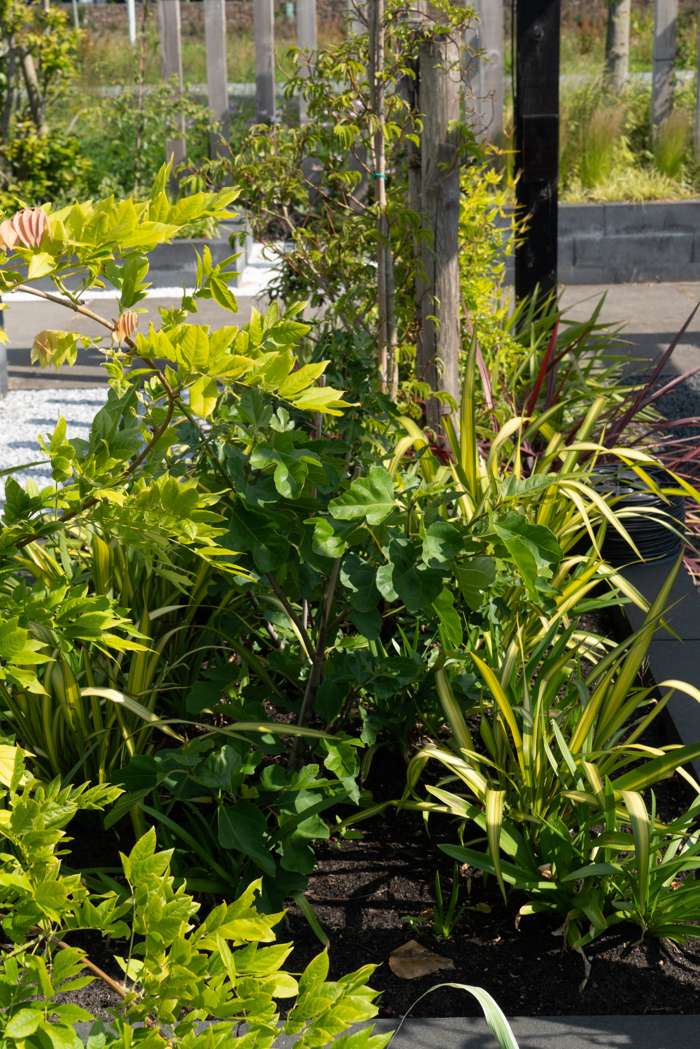

Ficus carica ‘Brown Turkey’
‘Ficus Carica Brown Turkey’ is known as the most popular fig variety because of its regular large harvest of medium-sized fruits with dark red flesh. In exceptional years, it can give three harvests per year. The leaves of the fig tree are hand-shaped and are best known from the depiction of Adam and Eve in […]
Best fig variety
Dark red flesh
Harvesting in September/October
Find our items at one of our online providers or a garden centre in your area:


Description
‘Ficus Carica Brown Turkey’ is known as the most popular fig variety because of its regular large harvest of medium-sized fruits with dark red flesh. In exceptional years, it can give three harvests per year. The leaves of the fig tree are hand-shaped and are best known from the depiction of Adam and Eve in classical painting, where the fig leaf was used to cover the naked body. The fruit will ripen better if you protect the tree during the winter. The fig tree needs a sheltered but sunny position, preferably as warm as possible. So a south-facing garden, out of the wind, is optimal. You can plant the fig tree in the garden, on the balcony or terrace. When planted in a pot, it is best to bring the plant inside in winter. It is a fast grower, so if you do not prune it, it will grow a few metres high. If you think the branches are getting too long, you can prune the fig.

